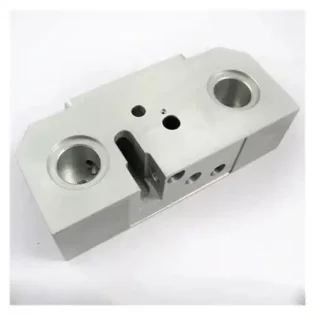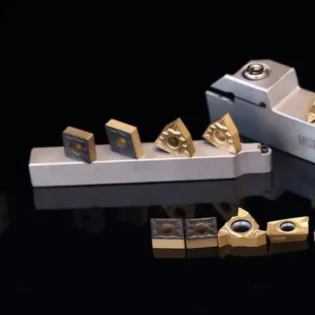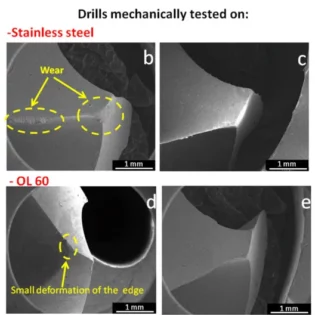girii?
Water jet machining, also known as water jet cutting, is a versatile and innovative manufacturing process that uses a high-pressure stream of water to cut through various materials. This technology has gained significant popularity in industries ranging from aerospace to automotive, and from food processing to art and design. Water jet machining is renowned for its precision, flexibility, and environmental friendliness. Unlike traditional cutting methods that rely on heat or mechanical force, water jet cutting uses the kinetic energy of water to achieve clean, precise cuts without altering the material’s intrinsic properties. This article explores the principles, applications, advantages, and limitations of water jet machining, as well as its future potential in modern manufacturing.
The Principles of Water Jet Machining
Water jet machining operates on a simple yet powerful principle: a high-pressure stream of water is directed at a material to erode and cut through it. The process can be divided into two main types:
- Pure Water Jet Cutting: This method uses only water, pressurized to levels as high as 60,000–90,000 psi (pounds per square inch). The water is forced through a small nozzle, typically made of sapphire or diamond, to create a fine, high-velocity stream. Pure water jet cutting is ideal for softer materials like rubber, foam, paper, and food products.
- Abrasive Water Jet Cutting: For harder materials such as metals, ceramics, and composites, an abrasive substance (usually garnet) is added to the water stream. The abrasive particles accelerate the cutting process by enhancing the erosive power of the water jet. This method can cut through materials several inches thick with remarkable precision.
The key components of a water jet machining system include:
- High-Pressure Pump: Generates the ultra-high-pressure water stream.
- Nozzle: Focuses the water into a fine, high-velocity jet.
- Abrasive Delivery System: Introduces abrasive particles into the water stream (for abrasive cutting).
- CNC Controller: Guides the nozzle along the desired cutting path with high accuracy.
- Catcher Tank: Collects the spent water and abrasive particles after cutting.
Applications of Water Jet Machining
Water jet machining is used across a wide range of industries due to its versatility and precision. Some of the most notable applications include:
1. Metal Fabrication
Water jet cutting is widely used in the metalworking industry to cut materials such as steel, aluminum, titanium, and copper. Its ability to cut without generating heat makes it ideal for materials that are sensitive to thermal distortion. This is particularly important in aerospace and automotive industries, where precision and material integrity are critical.
2. Stone and Tile Cutting
In the construction and interior design industries, water jet cutting is used to shape natural stone, ceramic tiles, and glass. The process allows for intricate designs and precise cuts, making it a favorite for creating decorative elements and custom fixtures.
3. Food Processing
Water jet cutting is a hygienic and efficient method for cutting food products. It is used to slice bread, cut meat, and portion fish without compromising food safety or quality. The absence of heat ensures that the food’s texture and flavor remain intact.
4. Composites and Plastics
Water jet machining is ideal for cutting composite materials, which are often challenging to process using traditional methods. It is used in the production of carbon fiber components, fiberglass, and other advanced materials.
5. Art and Design
Artists and designers use water jet cutting to create intricate patterns and shapes in materials like wood, acrylic, and metal. The technology enables the production of highly detailed and customized pieces.
6. Medical Device Manufacturing
In the medical industry, water jet cutting is used to fabricate precision components for devices such as implants, surgical instruments, and diagnostic equipment. The process ensures clean edges and minimal material waste.
Advantages of Water Jet Machining
Water jet machining offers numerous advantages over traditional cutting methods, making it a preferred choice for many applications:
- No Heat-Affected Zone (HAZ): Unlike laser or plasma cutting, water jet cutting does not generate heat, eliminating the risk of thermal distortion, warping, or changes in material properties.
- Versatility: Water jet cutting can handle a wide range of materials, from soft and delicate substances to hard and durable ones. This makes it a one-stop solution for many industries.
- Precision: The process allows for extremely tight tolerances, with cutting accuracy as high as ±0.001 inches. This level of precision is essential for industries like aerospace and medical device manufacturing.
- Environmental Friendliness: Water jet cutting is a clean process that produces no harmful fumes, dust, or waste. The water used can often be recycled, and the abrasive materials are non-toxic.
- Minimal Material Waste: The narrow kerf (cut width) of the water jet reduces material waste, making it a cost-effective option for expensive materials.
- No Tool Wear: Since water jet cutting does not involve physical contact between a tool and the workpiece, there is no tool wear, reducing maintenance costs.
- Ability to Cut Complex Shapes: The CNC-controlled nozzle can follow intricate paths, enabling the cutting of complex geometries and fine details.
Limitations of Water Jet Machining
Despite its many advantages, water jet machining does have some limitations:
- Cutting Speed: While water jet cutting is precise, it can be slower than other methods like laser or plasma cutting, especially for thick materials.
- Material Thickness: Although water jet cutting can handle thick materials, the process becomes less efficient as thickness increases. For extremely thick materials, alternative methods may be more suitable.
- Operating Costs: The high-pressure pumps and abrasive materials can be expensive to maintain and replace, leading to higher operating costs compared to some traditional methods.
- Surface Finish: While water jet cutting produces clean edges, the surface finish may require additional post-processing for certain applications.
- Noise and Vibration: The process can generate significant noise and vibration, which may require mitigation measures in some environments.
Innovations and Future Trends
Water jet machining continues to evolve, driven by advancements in technology and the growing demand for precision manufacturing. Some of the key trends and innovations in the field include:
- Hybrid Cutting Systems: Combining water jet cutting with other technologies, such as laser or plasma cutting, to leverage the strengths of each method.
- Automation and Robotics: Integrating water jet cutting systems with robotic arms and advanced CNC controls to enhance precision and efficiency.
- 3D Water Jet Cutting: Developing systems capable of cutting complex three-dimensional shapes, opening up new possibilities for manufacturing and design.
- Eco-Friendly Abrasives: Research into alternative abrasive materials that are more sustainable and environmentally friendly.
- Improved Pump Technology: Advances in high-pressure pump design to increase efficiency and reduce energy consumption.
- AI and Machine Learning: Using artificial intelligence to optimize cutting parameters and improve process control.
??züm
Water jet machining is a transformative technology that has revolutionized the way materials are cut and shaped. Its ability to deliver precision, versatility, and environmental benefits makes it an indispensable tool in modern manufacturing. While it has some limitations, ongoing advancements in technology are addressing these challenges and expanding the potential applications of water jet cutting. As industries continue to demand higher levels of precision and efficiency, water jet machining is poised to play an increasingly important role in shaping the future of manufacturing. Whether it’s cutting intricate designs in metal, slicing food products, or fabricating medical devices, water jet machining proves that sometimes, the simplest element—water—can be the most powerful tool.










